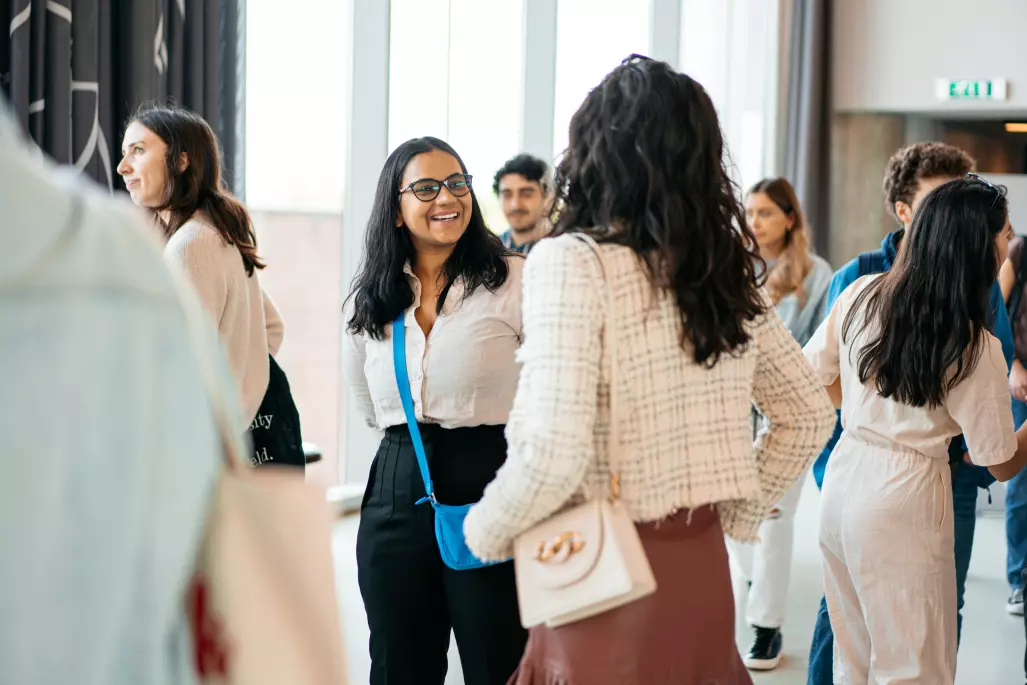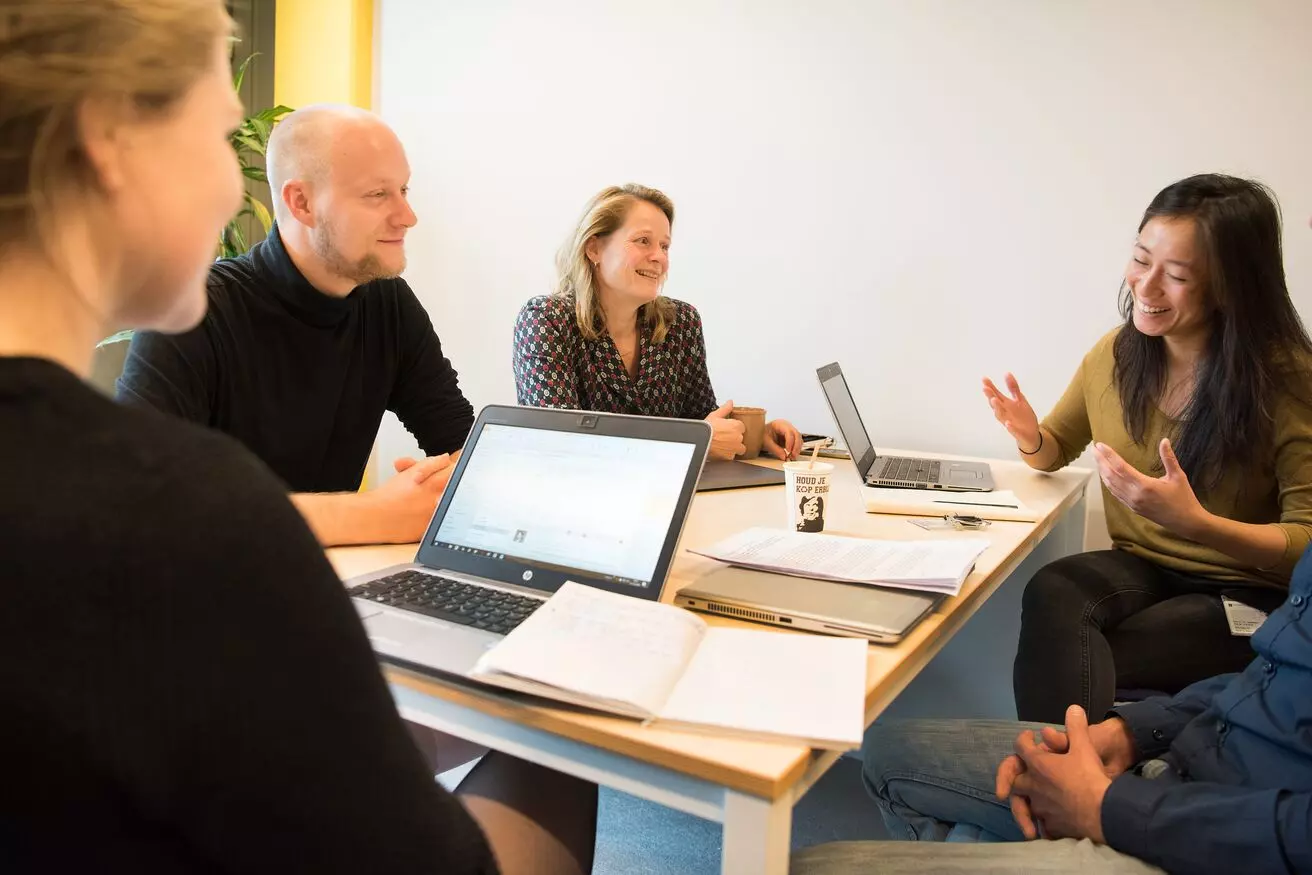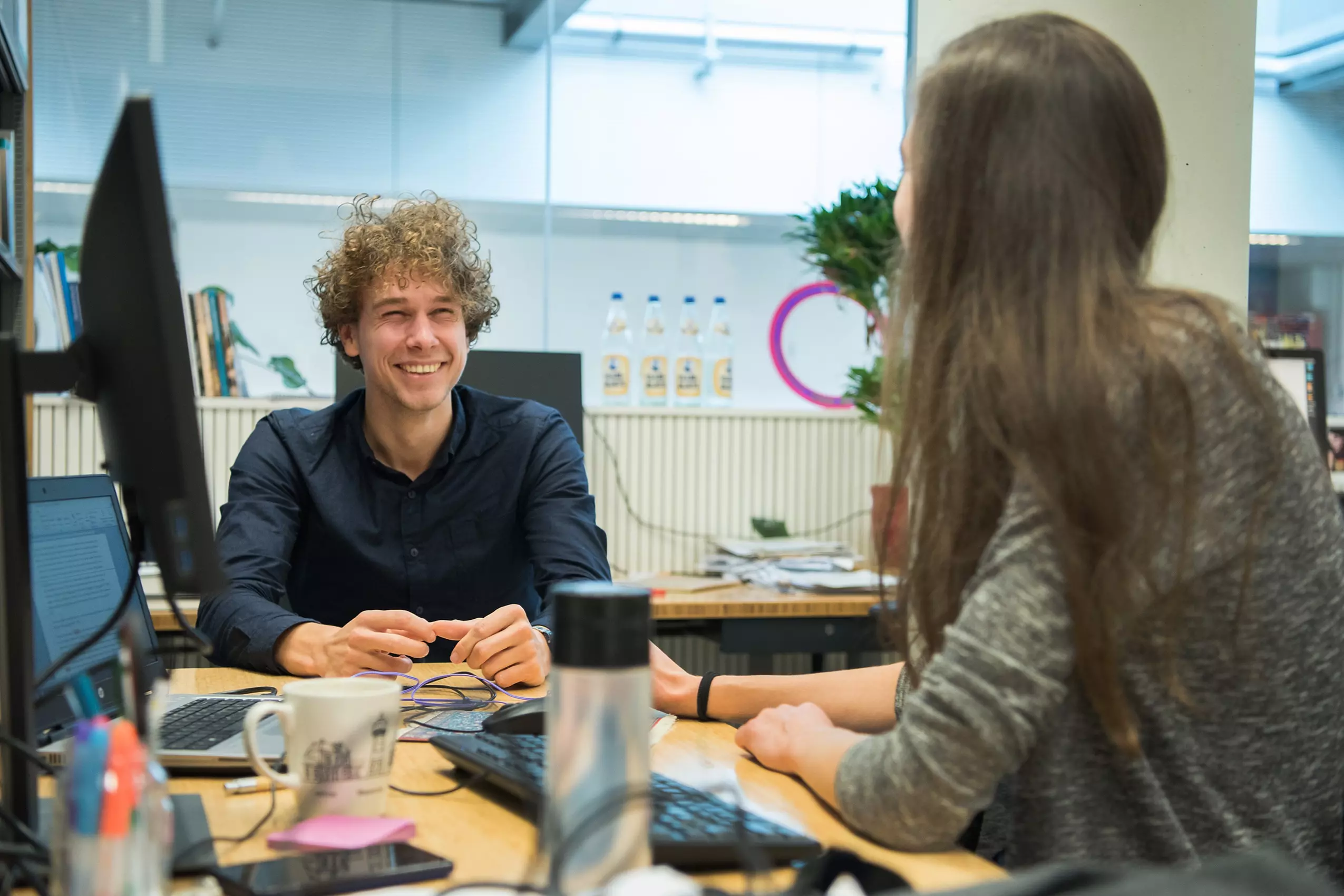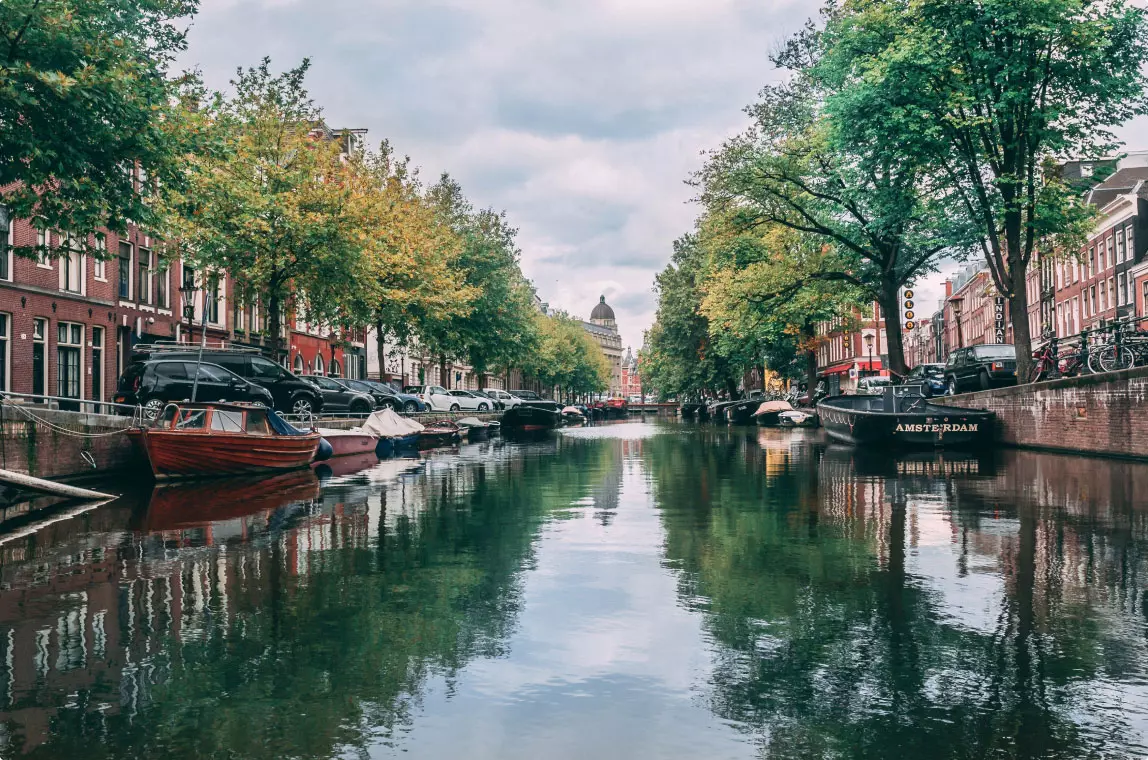.jpg)
Most of our decisions are guided by predictions—for instance, opting for a bike over a bus based on expected travel time and weather. However, unexpected changes, such as roadworks causing delays, can invalidate these predictions. According to normative Bayesian theory, highly surprising outcomes should prompt rapid belief updating, incorporating new information to improve future decisions. What are the brain circuits that mediate the flexible updating of prior beliefs? And how are these circuits disturbed in for example schizophrenia?
PhD candidate in Neuroscience of Statistical Learning in Health and Disease
- Faculty of Science
- 14124
- Master's
- €2.901 - €3.707
- 38 hours
- Closes on30-06-2025
.jpg)
Most of our decisions are guided by predictions—for instance, opting for a bike over a bus based on expected travel time and weather. However, unexpected changes, such as roadworks causing delays, can invalidate these predictions. According to normative Bayesian theory, highly surprising outcomes should prompt rapid belief updating, incorporating new information to improve future decisions. What are the brain circuits that mediate the flexible updating of prior beliefs? And how are these circuits disturbed in for example schizophrenia?
PhD candidate in Neuroscience of Statistical Learning in Health and Disease
- Faculty of Science
- 14124
- Master's
- €2.901 - €3.707
- 38 hours
- Closes on30-06-2025
Working at the UvA
Join us!
The project will test theory-driven hypotheses using an integrative, cross-species approach combining laminar ensemble recordings (with single-cell resolution), multi-fiber photometry and optogenetics in mice, and electroencephalography (EEG) in humans. Mouse and human observers will undergo a very similar statistical learning paradigm. Part of the research will be done with schizophrenic patients, potentially supplemented with a mouse model of schizophrenia.
The project, led by Dr. Jan Willem de Gee and Prof. Dr. Cyriel Pennartz, is embedded in the Cognitive and Systems Neuroscience (CSN) group at the Swammerdam Institute for Life Sciences (SILS). You will receive top-notch interdisciplinary training, which will prepare you well for a career in cognitive and systems neuroscience.
The mission of the Cognitive and Systems Neuroscience group is to elucidate how neuronal networks distributed across the sensory neocortex, frontal cortex, hippocampal memory system and subcortical regions cooperate in conscious perception, decision-making and memory processing. We are interested in questions such as how perceptual representations are formed and how perceptual decisions are made.
We employ state-of-the-art tools such as multi-area, laminar ensemble recordings, 2-photon imaging, multi-fiber photometry, optogenetics, functional magnetic resonance imaging (fMRI; at 7 Tesla), pupillometry and human electroencephalography. These approaches are combined with computational modelling psychophysics and other behavior.

Working at the UvA
Join us!
The project will test theory-driven hypotheses using an integrative, cross-species approach combining laminar ensemble recordings (with single-cell resolution), multi-fiber photometry and optogenetics in mice, and electroencephalography (EEG) in humans. Mouse and human observers will undergo a very similar statistical learning paradigm. Part of the research will be done with schizophrenic patients, potentially supplemented with a mouse model of schizophrenia.
The project, led by Dr. Jan Willem de Gee and Prof. Dr. Cyriel Pennartz, is embedded in the Cognitive and Systems Neuroscience (CSN) group at the Swammerdam Institute for Life Sciences (SILS). You will receive top-notch interdisciplinary training, which will prepare you well for a career in cognitive and systems neuroscience.
The mission of the Cognitive and Systems Neuroscience group is to elucidate how neuronal networks distributed across the sensory neocortex, frontal cortex, hippocampal memory system and subcortical regions cooperate in conscious perception, decision-making and memory processing. We are interested in questions such as how perceptual representations are formed and how perceptual decisions are made.
We employ state-of-the-art tools such as multi-area, laminar ensemble recordings, 2-photon imaging, multi-fiber photometry, optogenetics, functional magnetic resonance imaging (fMRI; at 7 Tesla), pupillometry and human electroencephalography. These approaches are combined with computational modelling psychophysics and other behavior.
All about this vacancy
What are you going to do?
You are expected to design, plan, and perform experiments in mice and humans. Co-supervisors will help during every stage of the project, but your strong motivation and pro-active work ethic is required. You are expected to learn new techniques quickly, if necessary.
Tasks and responsibilities:
• complete and defend a PhD thesis within the appointment duration of four years;
• design, plan, and perform experiments and data analysis in an independent manner;
• critically analyze and interpret results;
• write manuscripts;
• present your results at (inter)national scientific meetings;
• collaborate with international and local researchers;
• participate in the Faculty of Science PhD training programme;
• assist in teaching undergraduates and Master students;
• co-supervise internships of MSc/BSc students.
What do we require?
You are passionate about neuroscience with a particular interest in perception, cortical computations, neuromodulators and prediction. You should be able and motivated to acquire new knowledge through experiments in both mice and humans.
Your experience and profile
You have/are:
• a Master degree in Neuroscience or related fields;
• affinity with clinical work;
• the art. 9 certificate or are willing to obtain this;
• affinity with perception, consciousness, predictive processing and Bayesian statistics;
• experienced in in-vivo imaging / electrophysiology in rodents and/or EEG in humans;
• good programming skills;
• good analytical, writing and presenting skills;
• proficient in English and Dutch (for work with patients), both spoken and written.
Our offer
A temporary contract for 38 hours per week for the duration of 4 years (the initial contract will be for a period of 18 months and after satisfactory evaluation it will be extended for a total duration of 4 years). This should lead to a dissertation (PhD thesis). We will draft an educational plan that includes attendance of courses and (international) meetings. We also expect you to assist in teaching undergraduates and master students.
The salary will be € 2,901 in the first year to € 3,703 in the last year (scale P) gross per month, based on a fulltime contract (38 hours a week). This is exclusive 8% of holiday allowance and 8.3% end-of-year bonus. The Collective Labour Agreement of Dutch Universities is applicable.
Are you curious about our extensive package of secondary employment benefits like our excellent opportunities for study and development? Take a look here.
About us
The Swammerdam Institute for Life Sciences (SILS) is located at the vibrant Amsterdam Science Park. SILS is one of eight institutes of the University of Amsterdam's Faculty of Science (FNWI). With around 240 employees, SILS carries out internationally high-quality life science research and provides education within various university programs. Research is also carried out in close cooperation with the medical, biotech, chemical, flavor, food & agricultural, and high-tech industries, and revolves around 4 main themes, Cell & Systems biology, Neurosciences, Microbiology and Green Life Sciences.
All about this vacancy
What are you going to do?
You are expected to design, plan, and perform experiments in mice and humans. Co-supervisors will help during every stage of the project, but your strong motivation and pro-active work ethic is required. You are expected to learn new techniques quickly, if necessary.
Tasks and responsibilities:
• complete and defend a PhD thesis within the appointment duration of four years;
• design, plan, and perform experiments and data analysis in an independent manner;
• critically analyze and interpret results;
• write manuscripts;
• present your results at (inter)national scientific meetings;
• collaborate with international and local researchers;
• participate in the Faculty of Science PhD training programme;
• assist in teaching undergraduates and Master students;
• co-supervise internships of MSc/BSc students.
What do we require?
You are passionate about neuroscience with a particular interest in perception, cortical computations, neuromodulators and prediction. You should be able and motivated to acquire new knowledge through experiments in both mice and humans.
Your experience and profile
You have/are:
• a Master degree in Neuroscience or related fields;
• affinity with clinical work;
• the art. 9 certificate or are willing to obtain this;
• affinity with perception, consciousness, predictive processing and Bayesian statistics;
• experienced in in-vivo imaging / electrophysiology in rodents and/or EEG in humans;
• good programming skills;
• good analytical, writing and presenting skills;
• proficient in English and Dutch (for work with patients), both spoken and written.
Our offer
A temporary contract for 38 hours per week for the duration of 4 years (the initial contract will be for a period of 18 months and after satisfactory evaluation it will be extended for a total duration of 4 years). This should lead to a dissertation (PhD thesis). We will draft an educational plan that includes attendance of courses and (international) meetings. We also expect you to assist in teaching undergraduates and master students.
The salary will be € 2,901 in the first year to € 3,703 in the last year (scale P) gross per month, based on a fulltime contract (38 hours a week). This is exclusive 8% of holiday allowance and 8.3% end-of-year bonus. The Collective Labour Agreement of Dutch Universities is applicable.
Are you curious about our extensive package of secondary employment benefits like our excellent opportunities for study and development? Take a look here.
About us
The Swammerdam Institute for Life Sciences (SILS) is located at the vibrant Amsterdam Science Park. SILS is one of eight institutes of the University of Amsterdam's Faculty of Science (FNWI). With around 240 employees, SILS carries out internationally high-quality life science research and provides education within various university programs. Research is also carried out in close cooperation with the medical, biotech, chemical, flavor, food & agricultural, and high-tech industries, and revolves around 4 main themes, Cell & Systems biology, Neurosciences, Microbiology and Green Life Sciences.
Your place at the UvA
More about the UvA
The University of Amsterdam is ambitious, creative and committed. An inspiration to students since 1632, a vanguard player in international science and a partner in innovation.
The University of Amsterdam is the largest university in the Netherlands, with the broadest range of courses on offer. An intellectual hub with 42,000 students, 6,000 staff and 3,000 PhD students. Connected by a culture of curiosity.
Your place at the UvA
This is where you will be working
More about the UvA
The University of Amsterdam is ambitious, creative and committed. An inspiration to students since 1632, a vanguard player in international science and a partner in innovation.
The University of Amsterdam is the largest university in the Netherlands, with the broadest range of courses on offer. An intellectual hub with 42,000 students, 6,000 staff and 3,000 PhD students. Connected by a culture of curiosity.
Important to know
Your application & contact
Do you have questions about this vacancy? Or do you want to know more about our organisation?
Please contact: dr. J.W. de Gee (Assistant Professor; [email protected]).
Do you recognize yourself in the job profile? Then we look forward to receiving your application by 30 June 2025.
Applications in .pdf should include:
• a motivation letter and CV, including a list of publications,
• a copy of your Master’s thesis (when available). If not yet available, please include a copy of your Bachelor’s thesis.
• a list of all university courses taken, including a transcript of grades;
• the name and contact details (including email address) of two referees who can provide details about your profile (one of whom should be the main supervisor of your Master thesis).
A knowledge security check can be part of the selection procedure.
(for details: National knowledge security guidelines)
Diversity, Equity & Inclusion
As an employer, the UvA maintains an equal opportunities policy. We value diversity and are fully committed to being a place where everyone feels at home. We nurture inquisitive minds and perseverance and allow room for persistent questioning. With us, curiosity and creativity are the prevailing culture.
Important to know
Your application & contact
Do you have questions about this vacancy? Or do you want to know more about our organisation?
Please contact: dr. J.W. de Gee (Assistant Professor; [email protected]).
Do you recognize yourself in the job profile? Then we look forward to receiving your application by 30 June 2025.
Applications in .pdf should include:
• a motivation letter and CV, including a list of publications,
• a copy of your Master’s thesis (when available). If not yet available, please include a copy of your Bachelor’s thesis.
• a list of all university courses taken, including a transcript of grades;
• the name and contact details (including email address) of two referees who can provide details about your profile (one of whom should be the main supervisor of your Master thesis).
A knowledge security check can be part of the selection procedure.
(for details: National knowledge security guidelines)
As an employer, the UvA maintains an equal opportunities policy. We value diversity and are fully committed to being a place where everyone feels at home. We nurture inquisitive minds and perseverance and allow room for persistent questioning. With us, curiosity and creativity are the prevailing culture.
Other interesting vacancies for you
.jpg)
PhD Position Assessing Parenting Using a Dynamic Systems and Network Approach
- Faculty of Social and Behavioural Sciences
- €2.901 - €3.707
- Closes on30-06-2025
- Master's
- 38 hours
Parents play a crucial role in the well-being of children, but how do we best support them? And do we truly understand how parenting works to improve child development? In the innovative project “Parenting as a Network”, you will employ a novel network approach to answer these questions, by assessing parenting as a dynamic system. We are looking for a curious, driven PhD candidate ready to dive deep into this exciting new way of understanding and improving parenting and its implications for child development.
View vacancy

PhD Position Gull Foraging Ecology in the North Sea - NO-REGRETS Project
- Faculty of Science
- €2.901 - €3.707
- Closes on20-07-2025
- Master's
- 38 hours
Are you passionate about animal movement ecology? Interested in studying gull foraging ecology at sea? Apply for this unique PhD opportunity at the Department of Theoretical and Computational Ecology at IBED to conduct vital research on gull foraging behaviour in the North Sea, playing a key role in a major national initiative addressing the expansion of offshore wind energy.
View vacancy
.jpg)
2 PhD Positions in ConSOLIDATe Project on Light-induced Degradation
- Faculty of Science
- €2.901 - €3.707
- Closes on25-06-2025
- Master's
- 38 hours
Interested in studying light-induced degradation of materials used in art, pharmacy or as protective coatings in a diverse and international team? Within the ConSOLIDATe project, headed by professor Maarten van Bommel and jointly caried out at two universities (University of Amsterdam and de Vrije Universiteit, Amsterdam), we have two open PhD positions on the development of new analytical techniques for studying material degradation in solution and in solid phase.
View vacancy
Other interesting vacancies for you

PhD Position Assessing Parenting Using a Dynamic Systems and Network Approach
- Faculty of Social and Behavioural Sciences
- €2.901 - €3.707
- Closes on30-06-2025
- Master's
- 38 hours
Parents play a crucial role in the well-being of children, but how do we best support them? And do we truly understand how parenting works to improve child development? In the innovative project “Parenting as a Network”, you will employ a novel network approach to answer these questions, by assessing parenting as a dynamic system. We are looking for a curious, driven PhD candidate ready to dive deep into this exciting new way of understanding and improving parenting and its implications for child development.
View vacancy
.jpg)
PhD Position Gull Foraging Ecology in the North Sea - NO-REGRETS Project
- Faculty of Science
- €2.901 - €3.707
- Closes on20-07-2025
- Master's
- 38 hours
Are you passionate about animal movement ecology? Interested in studying gull foraging ecology at sea? Apply for this unique PhD opportunity at the Department of Theoretical and Computational Ecology at IBED to conduct vital research on gull foraging behaviour in the North Sea, playing a key role in a major national initiative addressing the expansion of offshore wind energy.
View vacancy

2 PhD Positions in ConSOLIDATe Project on Light-induced Degradation
- Faculty of Science
- €2.901 - €3.707
- Closes on25-06-2025
- Master's
- 38 hours
Interested in studying light-induced degradation of materials used in art, pharmacy or as protective coatings in a diverse and international team? Within the ConSOLIDATe project, headed by professor Maarten van Bommel and jointly caried out at two universities (University of Amsterdam and de Vrije Universiteit, Amsterdam), we have two open PhD positions on the development of new analytical techniques for studying material degradation in solution and in solid phase.
View vacancy

Don't miss out on your dream job!
Sign up for a job alert and you'll receive automatic updates about new and relevant vacancies.

Don't miss out on your dream job!
Sign up for a job alert and you'll receive automatic updates about new and relevant vacancies.
This website uses cookies
We, and third parties, use cookies on our website. We use cookies to ensure that our website functions properly, to store your preferences, to gain insight into visitor behavior, but also for marketing and social media purposes (showing personalized advertisements). By clicking 'Accept', you agree to the use of all cookies. In our Cookie Statement. you can read more about the cookies we use and save or change your preferences. By clicking 'Refuse' you only agree to the use of functional cookies.
